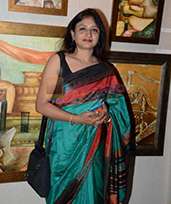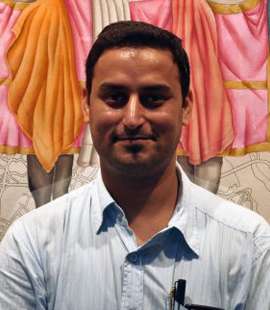
Indian art has never ceased to charm art lovers across the globe, and one such form of artwork that had created ripples in times gone by is surreal Indian paintings. Surrealism still has the power to captivate art admirers and leave them awestruck, even after more than 90 years when the movement’s mystic effect was ever known for the first time.
It was around the 1920s that an art movement spurred and changed the way art was created. The Surrealist art movement fused principles of its forerunners, Dada and cubism art movement, to create something uncharted by anyone in the realms of art. Initially, this movement was forbidden, nevertheless, its eccentric philosophies and unique practices paved the way for a new art form.
This blog is an attempt to throw light on historical origins of the surrealistic art form and the extent to which it has influenced Indian paintings.
What Marked the Origin of Surrealism Art?
The Surrealist art movement emanated from the earlier Dada movement. It was a movement in which artists reflected their repugnance with warfare and with life as a whole. These artists deeply felt and expressed that European culture had lost its meaning to them by painting pieces of anti-art or nonart. The prime inkling was to fly in the face of the conventional form of art.
“Dada” became the movement’s name to demonstrate the feeling of ridiculousness and pointlessness toward the art world. Paintings created by artists from this movement displayed a touch of combat or protest. Even though the movement was sparked predominantly on dissidence, Frank Picabia (one of the famous artist of that era) professed Dada movement to culminate in 1922, saying that it had become a too organized movement. In the face of the fact that it was avowed dead, the Dada movement rather ingrained the seeds of another, yet a more well-thought-out movement.
Influence of Surrealism in Indian Art
Surrealism, in contrast to the art movement in Europe, certainly showed influence on Indian visual-arts contemplation since the time immemorial. Iconography in Indian art epitomizes an inimitable panorama of surrealistic metaphors. Indian epics, folklores, ceremonies and the wide selection of different folk arts which proliferate as an incarnate practice, depict the unusual image of the artist’s mind.
Over the past few decades, an effort has been made by various distinguished and upcoming artists to track the influence of surrealism in contemporary art. The artists who have created surreal Indian paintings are Sanat Kar, Ganesh Pyne, Shuvaprasanna, Jogen Chowdhury, Partha Pratim Deb, Asit Mondal, Dinanath Pathy, P.R.Narvekar and Dipali Bhattacharya, to name a few.
Driving force Indian artists to create magnificent surrealistic Indian Paintings-
Sanat Kar's recent paintings come with an infusion of blissful surrealism revolving around his instant and the cherished world, looking to switch identities and realign the accustomed, and making them even more desired. His exhibition of realism often reflected dream-like elements. A whole realm of imaginary is unleashed in his principally related art.
Another Indian artist Ratan Parimoo, a creative person, appreciates the world around him in an incomparable way and complications experienced in life influence his sentiments. He believes that an artist subsists in an artistic and visionary world made by such familiarities and emotional state, and is very coherent about the perception of creativeness and aesthetics.
The fragmentary style of expression gives a surrealist feel to Sakti Burman work that appears to be detached from realism. The rich surface along with the use of vivid colors manifests a mythological world colonized by men, women, children, birds and beasts.
In contrast to other surreal artists, Ganesh Pyne feels more inspired by rich traditional stories of West Bengal that his grandmother used to narrate him during his childhood days. The painter perfectly blends the elements of romanticism, imaginary and free form in conjunction with innovative use of light and shade to create a realm of poetic surrealism in his paintings.





















